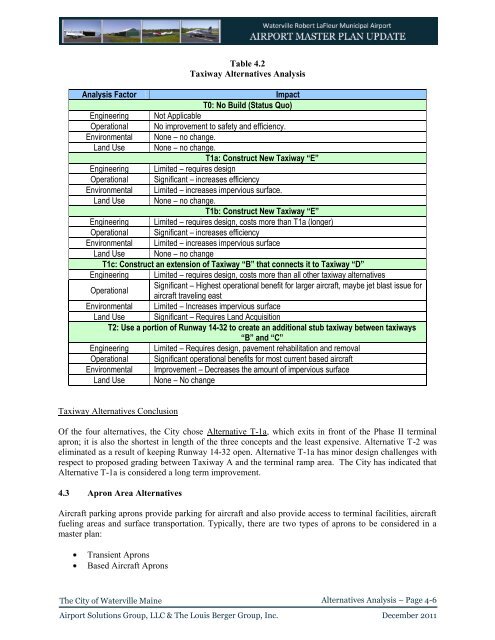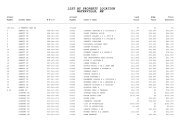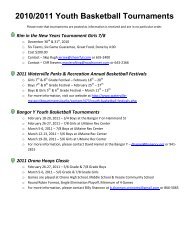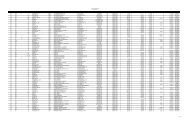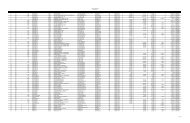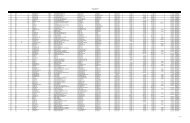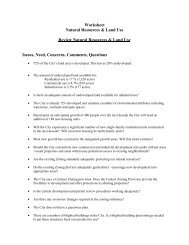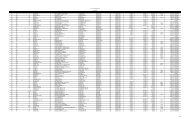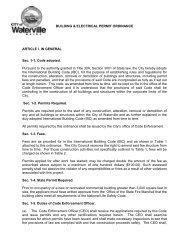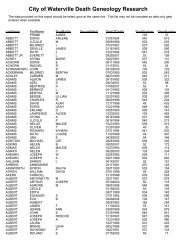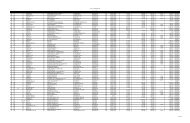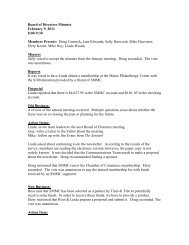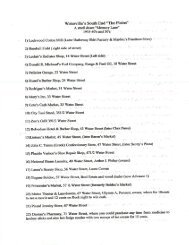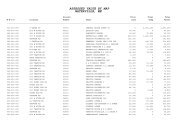Airport Master Plan 2012 - City of Waterville
Airport Master Plan 2012 - City of Waterville
Airport Master Plan 2012 - City of Waterville
You also want an ePaper? Increase the reach of your titles
YUMPU automatically turns print PDFs into web optimized ePapers that Google loves.
Table 4.2<br />
Taxiway Alternatives Analysis<br />
Analysis Factor<br />
Impact<br />
T0: No Build (Status Quo)<br />
Engineering Not Applicable<br />
Operational No improvement to safety and efficiency.<br />
Environmental None – no change.<br />
Land Use None – no change.<br />
T1a: Construct New Taxiway “E”<br />
Engineering Limited – requires design<br />
Operational Significant – increases efficiency<br />
Environmental Limited – increases impervious surface.<br />
Land Use None – no change.<br />
T1b: Construct New Taxiway “E”<br />
Engineering Limited – requires design, costs more than T1a (longer)<br />
Operational Significant – increases efficiency<br />
Environmental Limited – increases impervious surface<br />
Land Use None – no change<br />
T1c: Construct an extension <strong>of</strong> Taxiway “B” that connects it to Taxiway “D”<br />
Engineering Limited – requires design, costs more than all other taxiway alternatives<br />
Operational<br />
Significant – Highest operational benefit for larger aircraft, maybe jet blast issue for<br />
aircraft traveling east<br />
Environmental Limited – Increases impervious surface<br />
Land Use Significant – Requires Land Acquisition<br />
T2: Use a portion <strong>of</strong> Runway 14-32 to create an additional stub taxiway between taxiways<br />
“B” and “C”<br />
Engineering Limited – Requires design, pavement rehabilitation and removal<br />
Operational Significant operational benefits for most current based aircraft<br />
Environmental Improvement – Decreases the amount <strong>of</strong> impervious surface<br />
Land Use None – No change<br />
Taxiway Alternatives Conclusion<br />
Of the four alternatives, the <strong>City</strong> chose Alternative T-1a, which exits in front <strong>of</strong> the Phase II terminal<br />
apron; it is also the shortest in length <strong>of</strong> the three concepts and the least expensive. Alternative T-2 was<br />
eliminated as a result <strong>of</strong> keeping Runway 14-32 open. Alternative T-1a has minor design challenges with<br />
respect to proposed grading between Taxiway A and the terminal ramp area. The <strong>City</strong> has indicated that<br />
Alternative T-1a is considered a long term improvement.<br />
4.3 Apron Area Alternatives<br />
Aircraft parking aprons provide parking for aircraft and also provide access to terminal facilities, aircraft<br />
fueling areas and surface transportation. Typically, there are two types <strong>of</strong> aprons to be considered in a<br />
master plan:<br />
Transient Aprons<br />
Based Aircraft Aprons<br />
The <strong>City</strong> <strong>of</strong> <strong>Waterville</strong> Maine<br />
Alternatives Analysis – Page 4-6<br />
<strong>Airport</strong> Solutions Group, LLC & The Louis Berger Group, Inc. December 2011


